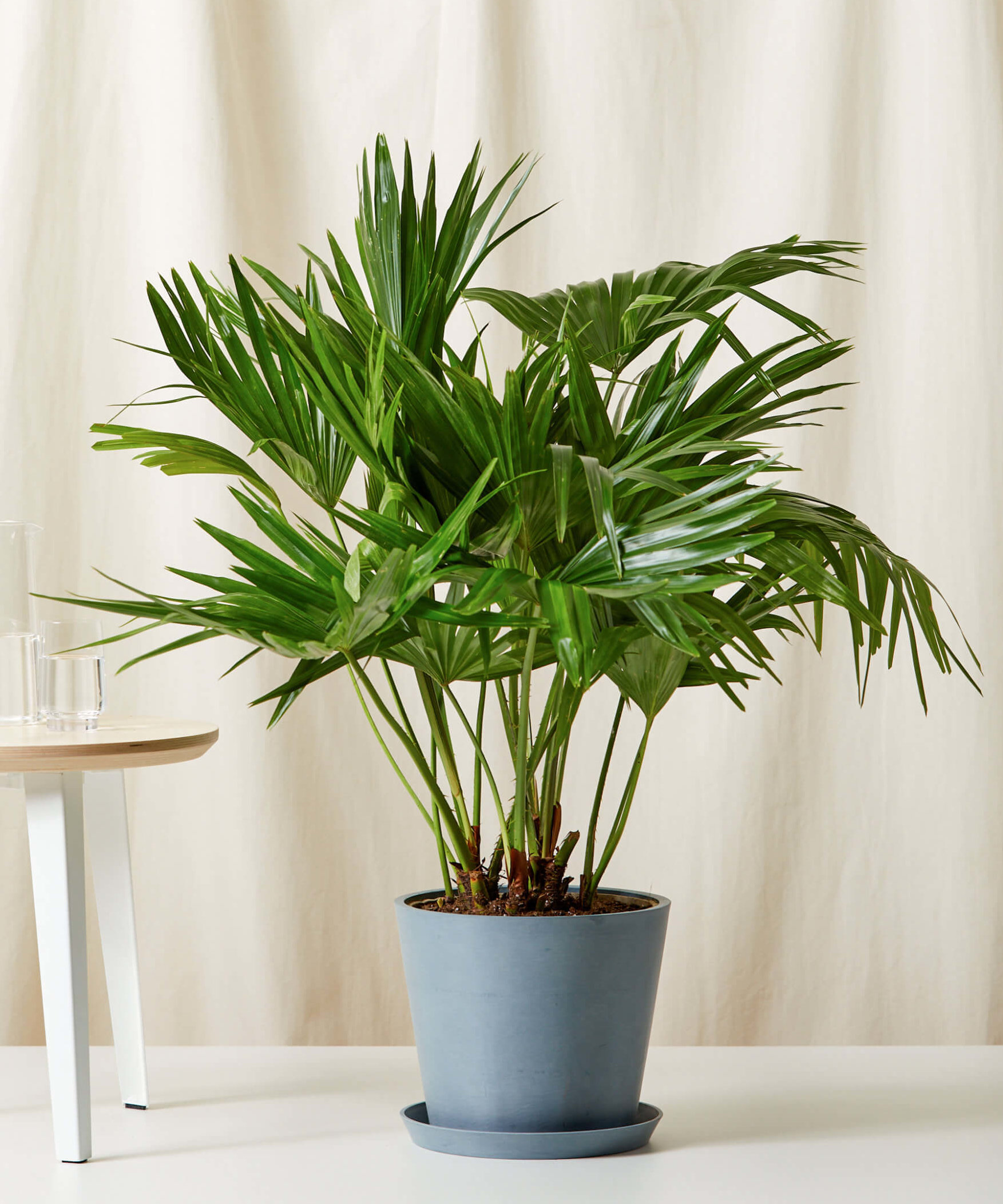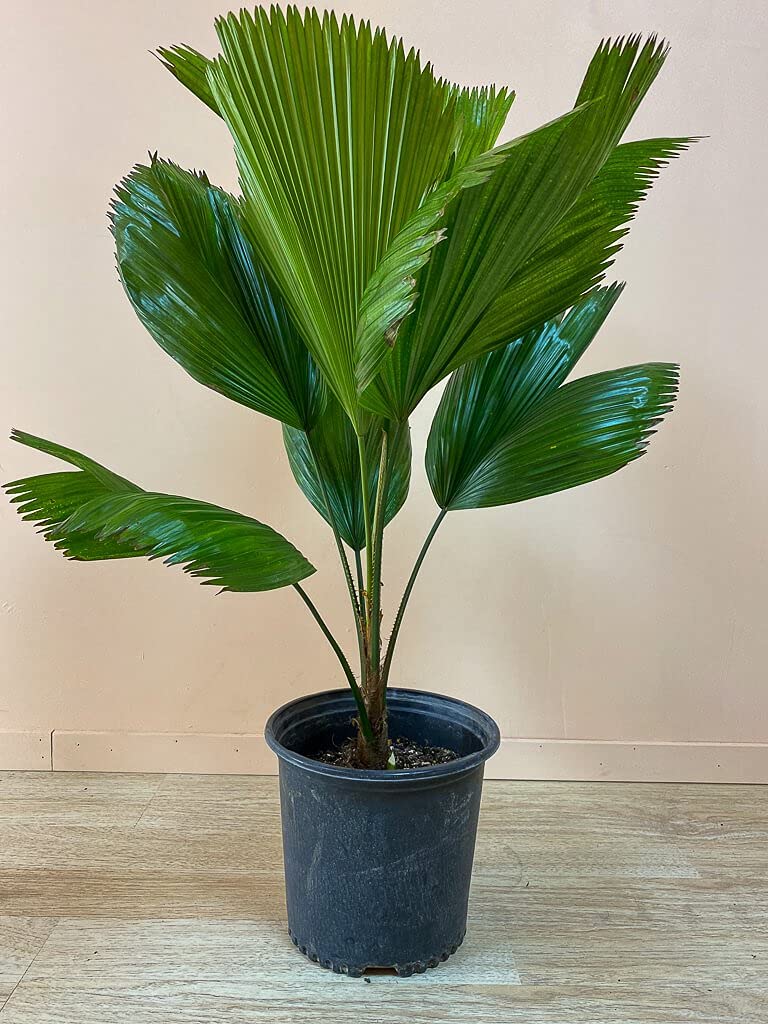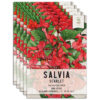When you’re a pet owner, selecting the right plants for your home becomes crucial. Not only do you want greenery that enhances your living space, but you also need to ensure it’s safe for your furry friends. One plant that often comes up in these discussions is the fan tufted palm, scientifically known as Rhapis excelsa. It’s a popular choice for many reasons, but primarily because it’s pet-friendly.
Key Insights into Fan Tufted Palm Care for Homes with Pets
- Fan Tufted Palm is non-toxic to both cats and dogs, making it a safe addition to pet-friendly homes.
- It thrives in bright, indirect sunlight but can also tolerate partial shade, offering flexibility in placement.
- Regular watering is necessary, but overwatering can lead to root rot.
- The plant is well-suited for both indoor and outdoor environments, depending on climate conditions.
- Browning leaves can often be revived with proper care and adjustments in watering or lighting.
Why Choose Fan Tufted Palm for Your Space?
The fan tufted palm, or Lady Palm, is a striking addition to any home with its lush, fan-like leaves that add a touch of the tropics. But its appeal goes beyond aesthetics. It’s also incredibly adaptable and can fit into various lighting conditions, making it a versatile choice for different spaces.
“Chinese Fan Palm Indoor Plant …” from bloomscape.com and used with no modifications.
Natural Beauty and Appeal
The fan tufted palm boasts long, slender stems topped with a spray of fan-shaped leaves. This gives it a unique and elegant appearance that can complement any interior style, from modern to traditional. Besides that, its ability to grow up to 6 feet tall indoors means it can serve as a focal point in your decor, drawing attention and admiration from guests.
Non-Toxic Assurance for Pets
Most importantly, the fan tufted palm is recognized by the ASPCA as non-toxic to both cats and dogs. This means you can enjoy its beauty without worrying about the safety of your pets. However, while it’s non-toxic, excessive consumption by pets can still lead to mild digestive upset, so it’s wise to monitor your pets’ interactions with the plant.
Caring for Fan Tufted Palm Indoors and Outdoors
Caring for a fan tufted palm involves understanding its needs and providing the right conditions. This plant is relatively low-maintenance, but a few key considerations can help it thrive.
Light Needs: Bright Indirect vs Partial Shade
Fan tufted palms prefer bright, indirect sunlight, which mimics their natural habitat under the forest canopy. However, they are also tolerant of lower light conditions, which makes them suitable for indoor environments. If you’re placing your palm outdoors, ensure it’s in a spot where it receives dappled sunlight or partial shade to prevent leaf scorch.
Optimal Watering Tips
Watering is crucial to the health of your fan tufted palm. The soil should be kept consistently moist but not waterlogged. Overwatering can lead to root rot, a common issue with palms. Therefore, always check the top inch of soil before watering; if it feels dry, it’s time to water. In winter, reduce watering as the plant’s growth slows down.
Arrangement Ideas for Indoors and Outdoors
- Place the fan tufted palm in a well-lit corner of your living room to add a touch of greenery without overwhelming the space.
- Use it as a natural divider between different areas of a large room.
- In outdoor settings, position the palm near a shaded patio or porch to create a tropical oasis.
Arranging your fan tufted palm indoors can significantly enhance your home’s ambiance. By placing it in a corner with indirect light, you can create a calming focal point that draws the eye. The palm’s height and lush foliage also make it an excellent natural divider in open-plan spaces, offering privacy without the need for physical barriers.
For outdoor arrangements, the fan tufted palm shines when placed in partially shaded areas. A shaded patio or porch can become a tropical retreat with the addition of this palm, providing a serene backdrop for relaxation. Its resilience to varying light conditions means it can adapt to different outdoor settings, provided it’s not exposed to harsh, direct sunlight for extended periods.
Ultimately, the key to successful arrangement is ensuring the palm receives adequate light and is positioned in a way that complements your space’s overall aesthetic. With thoughtful placement, your fan tufted palm can thrive and enhance your home’s natural beauty.
Pet Safety: Understanding the ASPCA Certification
When it comes to pet safety, the ASPCA provides invaluable guidance by listing plants that are safe or toxic for pets. The fan tufted palm, or Rhapis excelsa, is listed as non-toxic, which means it’s a safe choice for homes with cats and dogs. This assurance allows pet owners to enjoy the plant’s beauty without constant worry about their pets’ health.
Is Fan Tufted Palm Safe for Cats?
Cats are naturally curious creatures, and many enjoy exploring their environment by nibbling on plants. The good news is that the fan tufted palm is non-toxic to cats. This means if your feline friend decides to have a taste, there’s no need to panic. However, as with any plant, moderation is key. Too much consumption can lead to mild stomach upset, so it’s wise to keep an eye on your cat’s interactions with the palm.
Risks and Considerations for Dogs
Just like with cats, the fan tufted palm is safe for dogs, according to the ASPCA. This makes it an excellent choice for pet-friendly households. However, dogs, especially puppies, might be tempted to chew on the leaves, which could lead to minor digestive issues if consumed in large amounts. Therefore, it’s important to monitor your dog’s behavior around the plant. For more information on pet-safe plants, check out this ASPCA non-toxic plant guide.
Moreover, while the plant itself is non-toxic, the soil or fertilizers used might not be. Ensure that any fertilizers or soil amendments are pet-safe to prevent any accidental ingestion that could harm your dog.
Monitoring and Preventing Overconsumption
To ensure your pets remain safe, it’s essential to monitor their interactions with the fan tufted palm. If you notice your pet frequently chewing on the leaves, consider placing the plant out of reach or using natural deterrents like citrus peels, which many pets dislike.
Additionally, providing your pets with plenty of safe chew toys and engaging activities can distract them from the plant. Regularly checking the plant for signs of excessive nibbling can also help you intervene early and prevent any potential issues. For more information on pet-friendly plants, you can explore this guide on non-toxic plants for cats.
Addressing Browning Leaves
Even with the best care, you might notice browning leaves on your fan tufted palm. This can be concerning, but it’s often a sign of environmental stress rather than a permanent issue.
- Check if the plant is receiving too much direct sunlight, which can scorch the leaves.
- Ensure the soil is not overly dry or waterlogged, as both can lead to browning.
- Inspect for pests, which can damage the leaves and cause browning.
By addressing these potential causes, you can often reverse the browning and restore your plant’s health. Regularly adjusting your care routine based on the plant’s needs can prevent future issues and keep your fan tufted palm thriving.
Identifying Common Causes
Browning leaves can result from several factors, including inadequate watering, incorrect lighting, or pest infestations. It’s crucial to identify the root cause to apply the appropriate solution. Overwatering can lead to root rot, which manifests as browning leaves, while underwatering can cause the leaves to dry out and turn brown.
Effective Solutions for Reviving Leaves
Once you’ve identified the cause of browning leaves, you can take steps to revive them. If the issue is overwatering, allow the soil to dry out before watering again. For underwatered plants, gradually increase the frequency of watering. Adjusting the plant’s light exposure by moving it to a location with indirect sunlight can also help restore its vibrancy.
In cases of pest infestations, treating the plant with a gentle, pet-safe insecticide or manually removing pests can prevent further damage. With consistent care and attention, your fan tufted palm can recover from browning and continue to thrive in your home.
“Amazon.com : Vanuatu Fan Palm – Ruffled …” from www.amazon.com and used with no modifications.
Encouraging Healthy Growth
- Ensure the fan tufted palm receives adequate light and water to thrive.
- Use a balanced fertilizer during the growing season to promote lush foliage.
- Regularly prune to maintain its shape and remove any damaged fronds.
Growing a healthy fan tufted palm requires attention to its basic needs. Start by ensuring it receives the right amount of light—bright, indirect sunlight is ideal. This helps the plant photosynthesize effectively, promoting healthy growth. If you’re growing the palm indoors, place it near a window that receives filtered light to mimic its natural environment.
Watering is another critical aspect of care. Keep the soil moist but not soggy, as overwatering can lead to root rot. It’s best to water the plant thoroughly, allowing excess water to drain away, and then wait until the top inch of soil dries out before watering again. This routine will help maintain the right moisture level for your palm.
In addition to light and water, providing the plant with a balanced fertilizer during the growing season can support vibrant growth. A slow-release fertilizer applied every few months can supply the necessary nutrients, ensuring your palm remains lush and green. For more information on non-toxic plant care, consider exploring other ASPCA non-toxic plants.
Fertilizing Practices for Vibrant Growth
Fertilizing your fan tufted palm is essential to keep it thriving. During the spring and summer, use a balanced, slow-release fertilizer to provide a steady supply of nutrients. This is when the plant is actively growing and can benefit most from the extra nutrition. For more information on non-toxic plants, you might find this ASPCA non-toxic plants list helpful.
Apply the fertilizer according to the package instructions, usually every 6-8 weeks. Be cautious not to over-fertilize, as this can lead to salt build-up in the soil, which can harm the plant. If you notice any signs of nutrient burn, such as browning leaf tips, flush the soil with water to remove excess salts.
In the fall and winter, reduce or eliminate fertilization, as the plant’s growth slows down and it requires fewer nutrients. This seasonal adjustment helps prevent over-fertilization and keeps your palm healthy year-round. For more information on plant care, check out the ASPCA non-toxic plants list.
Pruning Tips to Maintain Shape and Health
Pruning is an important part of maintaining your fan tufted palm’s health and appearance. Regularly remove any yellowing or damaged fronds to encourage new growth and prevent the spread of disease. Use clean, sharp pruning shears to make clean cuts at the base of the frond.
Besides removing damaged leaves, pruning can also help control the size and shape of your palm. If the plant becomes too large for its space, selectively prune back some of the outer fronds to reduce its size. This will help maintain a balanced and attractive appearance.
Frequently Asked Questions
Here are some common questions about caring for a fan tufted palm, along with detailed answers to help you provide the best care for your plant.
How often should I water my fan tufted palm?
The fan tufted palm prefers consistently moist soil, but it’s important not to overwater. Check the top inch of soil; if it’s dry, it’s time to water. Generally, watering every 7-10 days is sufficient, but adjust based on your home’s humidity and temperature.
Will fan tufted palm be fine in low light?
While the fan tufted palm can tolerate low light conditions, it thrives best in bright, indirect light. If placed in low light, the growth may slow down, and the leaves may become less vibrant. Consider supplementing with artificial light if natural light is insufficient.
Can I grow fan tufted palm from seeds?
Yes, growing a fan tufted palm from seeds is possible, but it requires patience. The seeds need to be fresh and should be sown in a well-draining potting mix. Keep the soil consistently moist and provide warmth and humidity for germination, which can take several months.
How tall does a mature fan tufted palm typically grow?
Indoors, a mature fan tufted palm can reach heights of 4-6 feet, depending on the care and environment. Outdoors, in optimal conditions, it can grow even taller, reaching up to 12 feet. Regular pruning can help control its size and keep it manageable in indoor settings.







